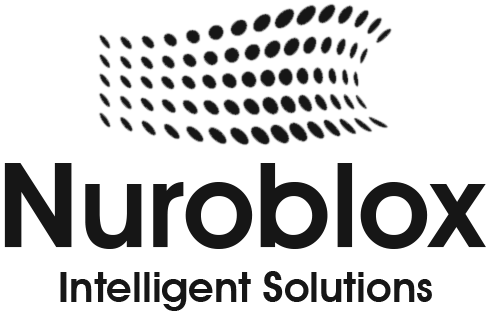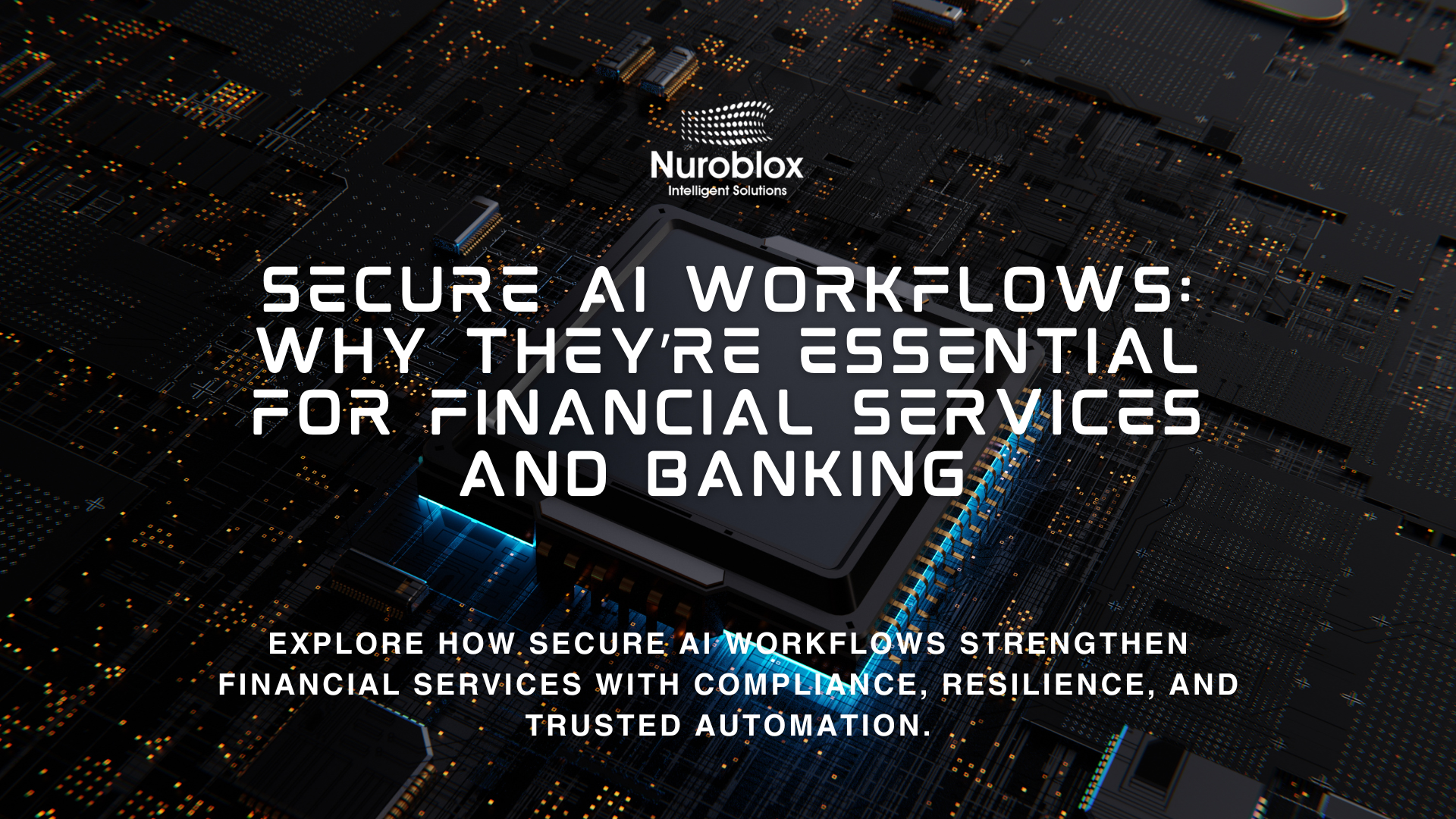Secure AI Workflows: Why They’re Essential for Financial Services and Banking
The global banking industry is on the cusp of a revolution, with artificial intelligence poised to deliver up to $1 trillion in additional value annually Financial institutions are rapidly deploying AI to automate everything from loan underwriting to customer service. However, this rush to innovate has exposed a critical vulnerability. As AI systems become more integrated into core operations, they create a vast new attack surface. The stakes are immense; in the financial sector, nearly 40% of all AI-driven transactions are blocked due to security concerns, the highest rate of any industry.
The challenge for today’s financial leaders is not whether to adopt AI, but how to do so securely. Simply layering security measures on top of AI applications is no longer sufficient. The only viable path forward is to build security into the very fabric of AI workflows, from data ingestion to model deployment. This “security-by-design” approach is not a feature but a fundamental prerequisite for survival and growth in the modern financial landscape. This article provides a technical blueprint for why secure AI workflows are non-negotiable for banking and financial services and offers a roadmap for their implementation.
The Dual Mandate – Balancing AI-Driven Innovation and Ironclad Security
In financial services, AI presents a dual reality – it is simultaneously the most powerful tool for fortifying defenses and the most significant new source of potential vulnerabilities. On one hand, AI streamlines operations, enhances fraud detection, and delivers the hyper-personalized experiences that modern customers demand. On the other hand, every new AI model and automated process introduces risks, including data privacy breaches, biased decision-making, and openings for sophisticated cyberattacks.
This duality creates a critical mandate for financial institutions – to innovate aggressively while maintaining ironclad security. The rise of complex systems like agentic AI, which can execute actions like initiating transfers without human intervention, adds another layer of risk. If compromised, these autonomous agents could cause direct, real-world financial damage. The industry’s reliance on AI is expanding the attack surface, creating new targets for malicious actors who can exploit vulnerabilities in AI models themselves through methods like prompt injection and data poisoning.
The High Stakes of Insecurity – Quantifying the Risks in Financial AI
Failing to secure AI workflows is not a hypothetical risk; it carries severe and quantifiable consequences. These risks extend beyond direct financial loss to encompass regulatory penalties and the erosion of the most valuable asset in banking – customer trust.
Financial and Reputational Damage
Insecure AI workflows leave institutions exposed to significant financial losses from fraud. Before implementing an AI-driven fraud detection system, financial firms face substantial threats. One case study, FinSecure Bank, saw a 60% reduction in fraudulent activities within the first year of deploying a custom AI model that analyzed real-time transaction data. Similarly, companies like PayPal leverage AI to achieve over 99% accuracy in fraud detection. These figures underscore the scale of financial losses that unsecured systems can incur.
Regulatory and Compliance Nightmares
The regulatory landscape for AI is evolving rapidly, and financial institutions are under intense scrutiny. Insecure workflows can lead to catastrophic compliance failures, triggering massive fines under regulations like GDPR and APRA’s CPS 230. An AI-driven predictive compliance system implemented by SafeGuard Financial reduced compliance incidents by over 50% and improved the accuracy of detecting regulatory breaches by 75%. This demonstrates how secure, automated workflows are essential for navigating the complex web of financial regulations.
Erosion of Customer Trust
For any financial institution, trust is the cornerstone of its business. A single high-profile security breach or an incident of biased AI-driven decision-making can irreparably damage a bank’s reputation. Biometric systems, which use unique traits for authentication, offer a more secure alternative to traditional passwords and are a key component in building customer confidence. Securing these AI-powered authentication workflows is paramount to maintaining the trust that underpins the customer relationship.
Pillars of a Secure AI Workflow – A Technical Blueprint
To counter these risks, financial institutions must adopt a security-by-design philosophy, embedding security into every stage of the AI lifecycle. A truly secure AI workflow is built on three core pillars – end-to-end security integration, a zero-trust architecture, and comprehensive auditing capabilities.
Security-by-Design – From Data Ingestion to Model Deployment
A secure-by-design approach means that security is not an afterthought but a foundational component of the entire AI workflow.
- Secure Data Handling – The process starts with safeguarding the sensitive customer data used to train AI models. This involves robust data encryption, data anonymization where possible, and strict adherence to data privacy regulations like GDPR.
- Robust Model Development – During development, models must be protected from threats like data poisoning, where malicious data is introduced to corrupt the model’s learning process. Mitigating inherent biases in training data is also a critical security and ethical requirement.
- Continuous Security Testing – Traditional testing methods are inadequate for complex AI systems. AI-powered test automation is essential for validating the security and integrity of financial workflows. Financial institutions using this approach have seen 96% fewer transaction processing errors, accelerated regulatory compliance validation by 73%, and achieved an 89% reduction in security testing overhead.
Zero-Trust Architecture for AI Systems
The principle of “never trust, always verify” is critical for AI workflows. A zero-trust architecture requires continuous authentication and strict policy enforcement for every interaction within the workflow, whether it’s a user, a device, or another application component. This is particularly important for agentic AI systems, where autonomous actions must be continuously monitored and validated against predefined security policies.
End-to-End Auditing and Explainability (XAI)
To satisfy regulators and build trust, AI-driven decisions cannot occur in a “black box”. Secure AI workflows must include comprehensive audit trails that log every action and decision. Furthermore, the adoption of Explainable AI (XAI) techniques is becoming essential. XAI provides clear, human-understandable justifications for a model’s output, which is crucial for regulatory reporting, debugging, and ensuring fairness in decision-making.

When implemented correctly, secure AI workflows transform high-risk processes into strategic assets. The following use cases demonstrate how financial institutions are leveraging secure AI to drive value.
Use Case 1 – Automated Fraud Detection and Prevention
Modern fraud detection systems use AI to analyze millions of transactions in real-time, identifying patterns and anomalies indicative of fraud. Unlike static, rules-based systems, these AI models continuously learn from new data, allowing them to adapt to evolving fraud tactics. AI in fraud detection can reduce false positives by up to 70% while increasing the detection of actual fraud by up to 90%. This not only reduces financial losses but also enhances the customer experience by minimizing erroneously blocked transactions.
Use Case 2 – AI-Powered Regulatory Compliance and Reporting
AI is revolutionizing compliance by automating laborious tasks like Know Your Customer (KYC) and Anti-Money Laundering (AML) checks. AI-powered workflows can scan vast datasets and communications to ensure adherence to regulations, flag potential breaches proactively, and generate real-time reports for regulators. The success of firms like SafeGuard Financial, which used AI to dramatically improve breach detection accuracy, highlights the power of secure automation in managing compliance risk.
Use Case 3 – Secure Customer Onboarding and Biometrics
Customer onboarding is a critical workflow that requires extensive identity verification and regulatory checks while maintaining a seamless user experience. AI-powered testing solutions are used to validate this entire process, from optical character recognition (OCR) of identity documents to multi-factor authentication and biometric validation. By securing this workflow end-to-end, financial institutions can prevent identity fraud at the point of entry and build a foundation of trust from the first interaction.
Overcoming the Implementation Hurdles – A Strategic Roadmap
Despite the clear benefits, implementing secure AI workflows is not without its challenges. Common hurdles include talent shortages, integration with legacy systems, and navigating a complex regulatory environment. A strategic approach can help overcome these obstacles.
Bridging the Talent Gap
The demand for AI talent far outstrips the supply. Financial institutions must invest heavily in training and upskilling their existing workforce to build in-house expertise in both AI development and AI security. Partnering with specialized AI firms can also help bridge immediate gaps while internal capabilities are being developed.
Integrating with Legacy Systems
Many banks run on decades-old infrastructure, making the integration of modern AI systems a significant challenge. A phased approach, starting with non-core systems and using secure APIs to connect new AI applications to legacy platforms, can help manage this complexity. This allows institutions to modernize incrementally without disrupting critical operations.
Navigating the Evolving Regulatory Landscape
The laws governing AI are still being written. Financial institutions must engage proactively with regulators to understand expectations and help shape future frameworks. Building AI systems that are transparent, explainable, and easily auditable will ensure they can adapt to new regulatory requirements as they emerge.
The Future is Secure and Automated
For the financial services industry, AI is no longer optional; it is a competitive necessity. However, the pursuit of innovation cannot come at the cost of security. Insecure AI is not just a technical problem; it is an existential threat that can lead to catastrophic financial, regulatory, and reputational damage. The future of banking will be defined by those institutions that master the art of embedding security deep within their automated processes. By embracing a security-by-design philosophy, financial firms can transform AI from a potential liability into their most powerful strategic asset.
As you scale your organization’s AI initiatives and race toward a more automated future, the critical question remains – is your security architecture evolving at the same pace, or is your innovation unknowingly creating the next major vulnerability?


